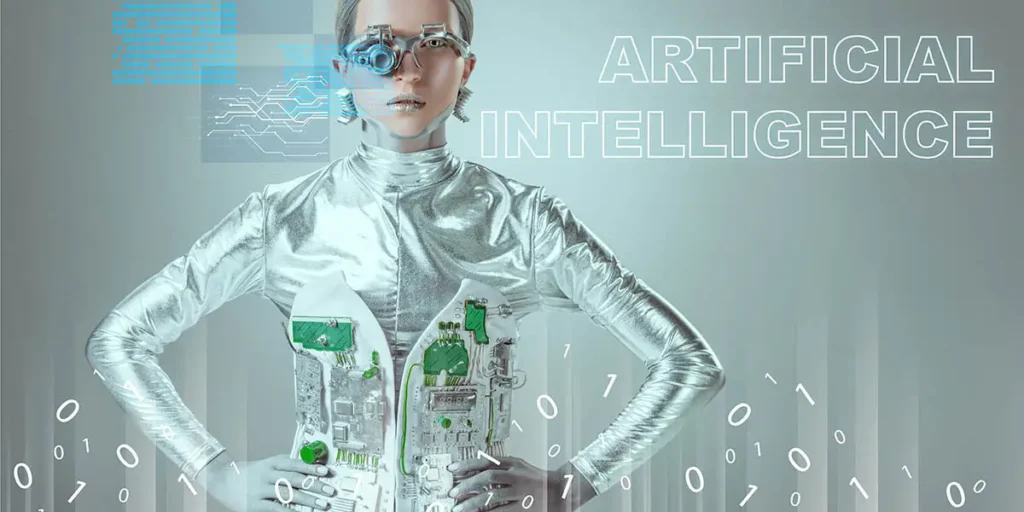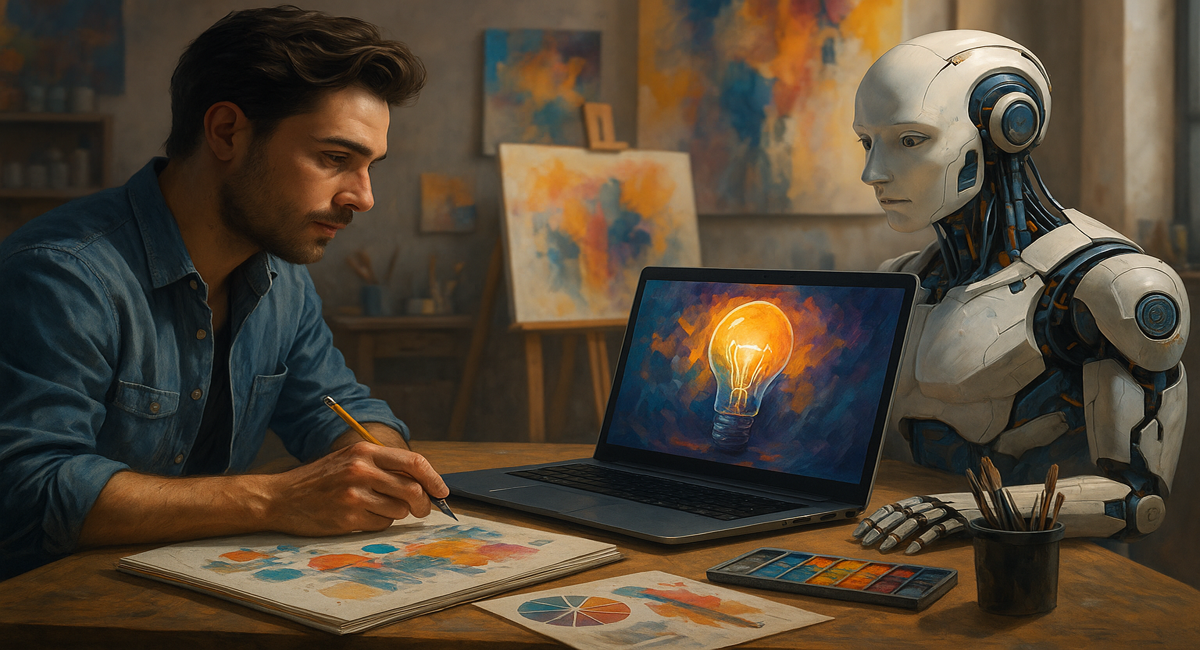AI and Creativity: How Generative Tools Are Changing the Game
If you’re an artist, designer, filmmaker or creative entrepreneur, there’s a good chance you’ve already toyed with generative AI. If you haven’t, you’ve probably at least seen the explosion of AI‑generated images, videos and stories in your feeds and wondered what it all means. In this post, we’ll explore what AI can actually do for creative people and companies, highlighting real examples, stats and the debates that come with them. Think of it as a friendly guide through the new landscape where algorithms meet imagination. AI and Creativity are driving innovations across multiple artistic fields, sparking new ideas and approaches.
Table of Contents
The creative spark: AI as your brainstorming partner
Many are now exploring how AI and Creativity can intersect to enhance artistic expression. Writers often say staring at a blank page is the hardest part of the job. Researchers at the University of Washington interviewed 18 creative writers and found that many turn to large language models when they hit a wall. Instead of replacing them, AI offers snippets of text or ideas that break down writer’s block and help them keep their momentum. In fact, the writers deliberately edit and rework AI outputs to maintain their own voice, using the machine as a “safety net” rather than a ghostwriter.
AI enhances the workflow of artists, making AI and Creativity a powerful partnership. Visual artists are getting similar boosts. Generative image models like DALL‑E, Midjourney and Stable Diffusion can turn a text prompt into a detailed illustration in seconds. Tools such as Runway Gen‑3 and OpenAI’s Sora take this idea into motion, generating short video clips based on a description and letting you remix scenes or adjust camera moves. For creatives stuck on a mood board or looking for unexpected inspiration, these models are like a digital sketchbook that never runs out of pages.
Musicians, too, are embracing AI. Programs like Aiva and Amper Music compose melodies based on the mood or genre you specify, which you can then tweak to suit your style. Even pop legends are experimenting: restorative AI was used to isolate John Lennon’s vocals from an old demo so that the remaining Beatles could record Now And Then, a track that won a Grammy in 2025.
As we navigate this evolving relationship between AI and Creativity, the focus must remain on artistic integrity.
Let the bots handle the boring bits
Creativity isn’t just about big ideas, it also involves a lot of repetitive work. AI excels at those tasks, freeing humans to focus on the fun stuff.
Graphic design: AI engines such as Adobe Sensei and Canva’s Magic Resize can crop photos, suggest layouts and adjust colour palettes automatically. Logo generators like Looka can spit out a custom branding kit in minutes. These tools won’t replace your artistic judgment, but they will help you move faster through production.
Video and image editing: Platforms like Runway offer text‑to‑video and image‑to‑video tools that let you describe a scene or upload a photo, then generate a clip that you can refine. They also provide one‑click background removal, object replacement and lip‑synced voiceovers. If you’re a solo creator juggling filmmaking, editing and social media, AI becomes a silent teammate handling the mundane edits while you steer the creative direction.
Marketing and personalization: AI doesn’t just generate content; it can tailor that content to specific audiences. By analyzing user data, it produces personalized ads, social media images or email banners. This helps small creative businesses create targeted campaigns without a dedicated marketing department.
Scaling up: Why companies are paying attention
For creative agencies, production studios and marketing teams, AI’s appeal goes beyond novelty. It’s about efficiency and scale. Industry research suggests that generative AI could grow from a $1.7 billion market in 2022 to $21.6 billion by 2032. Surveys of enterprise users report a 62% reduction in training‑video production time and a 44% decrease in production costs when AI tools are adopted. Another survey found that 74% of organizations achieve positive ROI within the first year.
There’s also a cultural boom. The UK government wants AI and other creative technologies to help grow its creative industries by £50 billion and create one million jobs by 2030. Immersive shows like ABBA Voyage, where digital avatars perform alongside a live band, have already demonstrated new revenue streams and audience experiences.
Ethical and legal questions you can’t ignore
While AI is opening doors, it also raises thorny issues. Generative models are trained on vast datasets scraped from the internet, including copyrighted artworks and personal data. Many artists worry that their style is being copied without consent; some voice actors fear digital replicas will replace them. The Writers Guild of America and SAG‑AFTRA strikes in 2023 brought these concerns to the forefront.
Creators overwhelmingly want transparency and control. In Adobe’s 2024 survey of more than 2,000 creatives, 90% said AI helps them save time and generate new ideas, but 56% worry that their work could be misused to train AI models. Huge majorities support labelling AI‑generated content and having tools that attach verifiable attribution to their work. Meanwhile, governments and intellectual property offices around the world are still figuring out how to regulate AI‑generated art.
Working with the machine, not against it
The most compelling takeaway from recent studies is that AI works best when treated as a collaborator, not a replacement. Writers use AI to brainstorm but set boundaries to preserve their own voice. Visual artists let AI generate drafts, then add their own flair and meaning. Designers automate resizing and cropping so they can spend more time experimenting with colour, typography and storytelling.
For creative companies, AI can lighten the load of content production, but it doesn’t remove the need for a strong brand vision. Instead of worrying about being replaced, think of AI as a powerful assistant. It can handle repetitive chores, help you explore new styles and even extend the life of your creative assets—while you stay in charge of the big picture.
Final thoughts
We’re at the start of a fascinating era where AI and Creativity intersect. The tools we’ve discussed are still evolving, and the ethical landscape is far from settled. Yet the opportunities are too compelling to ignore. If you’re a creative individual or run a creative business, experiment with AI tools to see how they can expand your imagination and streamline your workflow. Just remember to remain conscious of your values, maintain authorship and advocate for fair practices along the way.
Have you tried any AI tools in your creative practice? Share your experiences in the comments—we’d love to hear how you’re blending artistry and technology.

Future of AI | How it Will Impact Our Lives in 2025?
AI has moved from the realms of science fiction into a cornerstone of modern technology, transforming various facets of our daily lives. The Future of AI is now.



